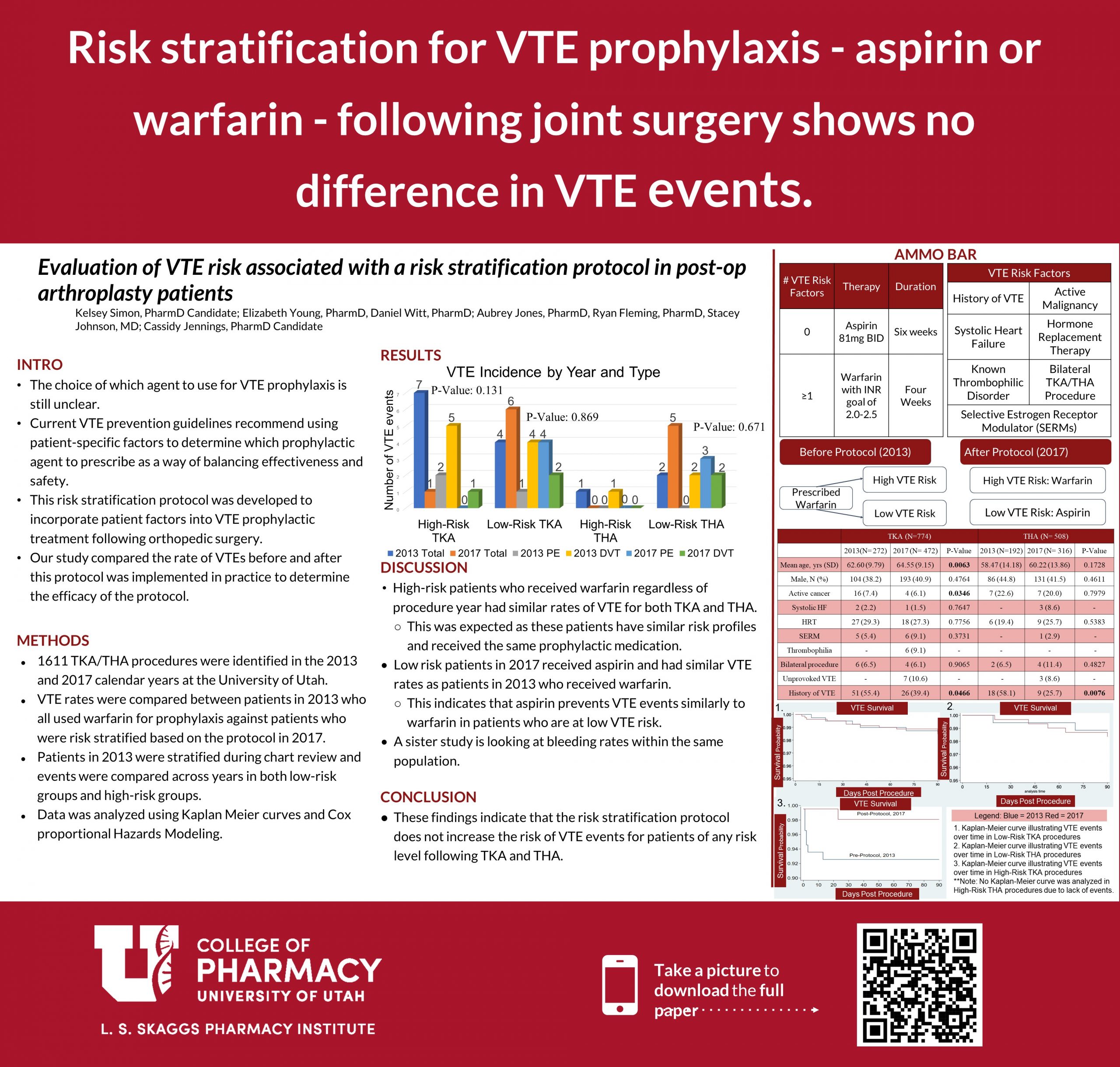Simon Kelsey

Evaluation of VTE Risks Associated with a Risk Stratification Protocol for Venous Thromboembolism Prophylaxis in Post-op Arthroplasty Patients
April 29, 2020 in College of Pharmacy, Virtual Poster Session Spring 2020

ABSTRACT
Background: VTE is a common complication following orthopedic surgery. Current guidelines have yet to identify definitive recommendations for which medications would best prevent VTE, but they recommend using patient-specific factors to guide prophylaxis choices. Risk stratification protocols are becoming increasingly popular to incorporate patient factors into therapy choice.
Objectives: To identify the efficacy of a risk stratification protocol used to determine VTE prophylaxis following primary TKA or THA.
Study Design: Retrospective cohort study
Patients/Methods: Adult patients who underwent primary TKA or THA at the University of Utah Hospital in 2013 or 2017 were included. Patients from 2017 received warfarin or aspirin based on the risk stratification protocol while patients from 2013 received empiric warfarin. The 2013 patients were stratified based on the protocol during chart review. VTE rates in the high-risk and low-risk patients from before the protocol initiation were compared to the rates in respective groups after the initiation.
Results: 1,390 TKA/THA procedures were included in the study. 26 of these patients experienced a VTE event. VTE rates in both low-risk TKA and THA procedures resulted in nonsignificant P-values of 0.869 and 0.671. High-risk TKA procedures also showed a nonsignificant difference in VTE rates (0.131).
Conclusion: This risk stratification protocol resulted in similar VTE event rates across all cohorts. This indicates that the protocol does not result in excess VTE risk and may prevent over-anticoagulation. Another arm of this study is looking at bleeding rates in this population.
